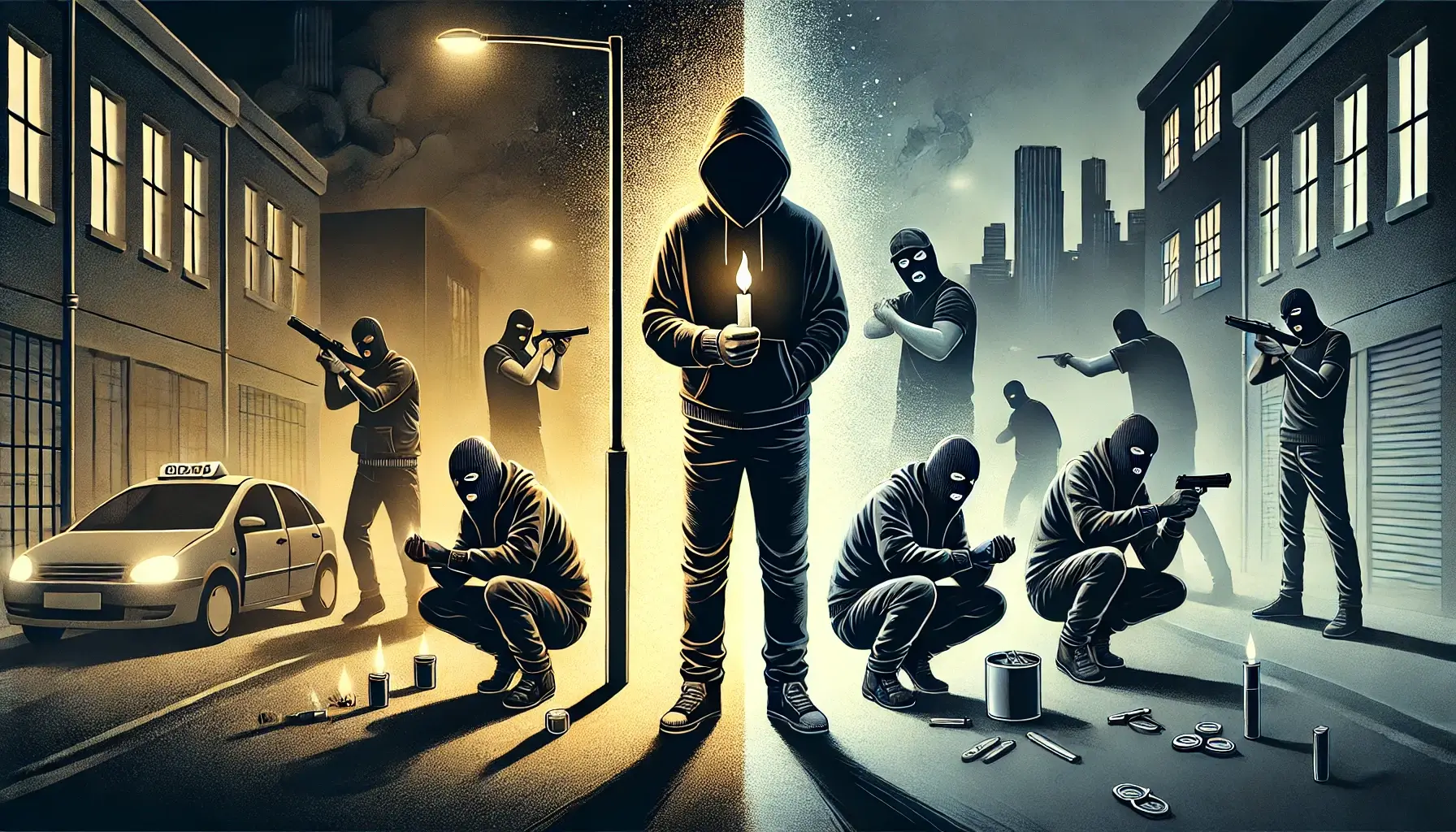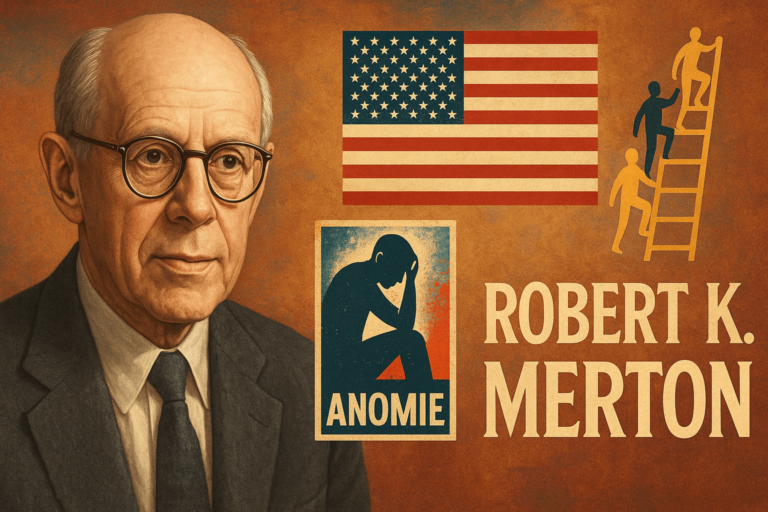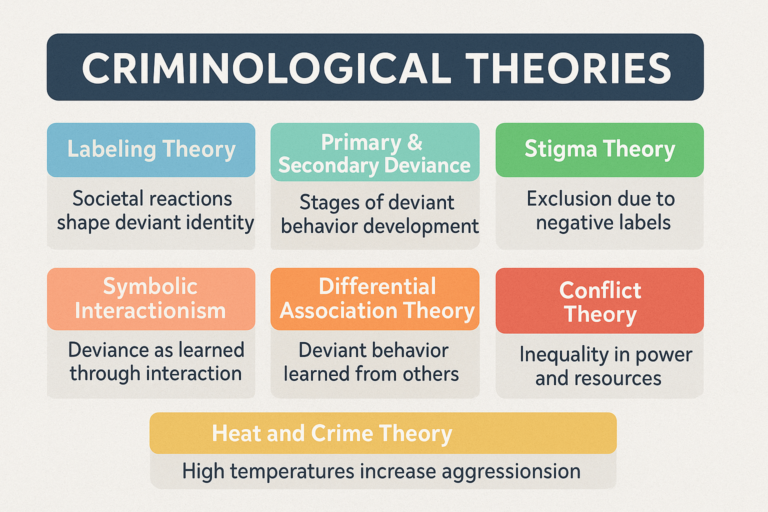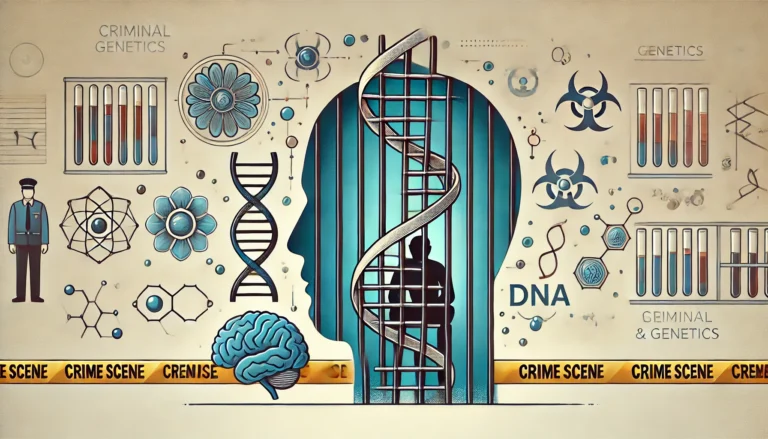Crime as an Individual Phenomenon vs. Criminality as a Collective Issue
Crime and criminality have been studied extensively in criminology, with scholars seeking to understand the factors that contribute to unlawful behaviors. While crime is often seen as an individual act, criminality as a broader concept can be viewed as a collective phenomenon shaped by societal, economic, and cultural factors. This article examines the distinction between crime as an individual action and criminality as a group or societal trend, exploring their causes, implications, and theoretical perspectives.
Crime as an Individual Phenomenon
Crime, at its core, is an individual act that violates legal norms. The reasons behind criminal actions often stem from personal choices, psychological factors, and situational circumstances.
Psychological and Biological Perspectives
From an individual perspective, crime can be explained through psychological and biological theories. Cesare Lombroso’s biological theory suggested that criminals possess inherent traits that predispose them to unlawful behavior. While modern criminology has largely rejected Lombroso’s deterministic views, studies continue to explore the role of genetics and neurobiology in criminal tendencies.
Psychological theories, such as Sigmund Freud’s psychoanalytic theory, argue that unconscious conflicts and childhood experiences can lead to deviant behavior. Social learning theory, proposed by Albert Bandura, emphasizes that individuals learn criminal behavior through observation and imitation of others.
Rational Choice and Opportunity Theories
Another explanation for crime at the individual level is the rational choice theory. This theory posits that individuals commit crimes after weighing the risks and rewards. If the perceived benefits outweigh the risks, a person is more likely to engage in criminal activity.
Opportunity theories, such as routine activity theory, suggest that crime occurs when a motivated offender encounters a suitable target without adequate guardianship. These perspectives emphasize that crime is often a calculated decision influenced by environmental factors.
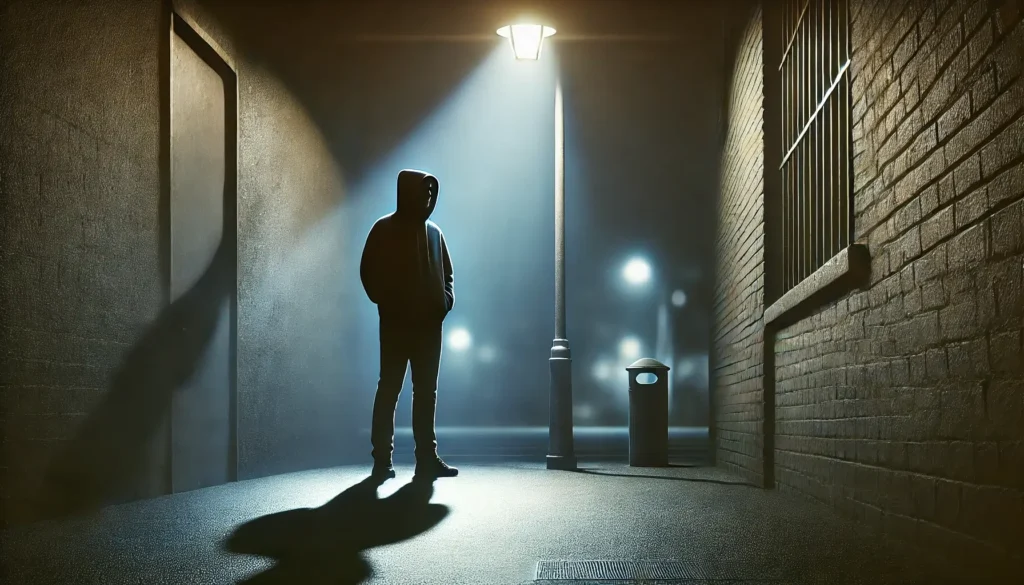
Criminality as a Collective Phenomenon
While crime involves individual actions, criminality refers to patterns of crime within a society or group. Criminality emerges from structural conditions, cultural influences, and socio-economic disparities.
Sociological Theories of Criminality
Sociologists view crime as a product of collective influences rather than just individual pathology. Several theories explain criminality as a group phenomenon:
- Strain Theory (Robert Merton): This theory suggests that societal structures create pressure on individuals to achieve success. When legitimate means to success are blocked, people may resort to crime. For example, economic inequality often leads to higher crime rates in disadvantaged communities.
- Social Disorganization Theory (Shaw and McKay): This theory argues that crime is more prevalent in communities with weakened social institutions, lack of cohesion, and economic instability. Neighborhoods with high poverty and mobility rates tend to have higher criminality levels.
- Cultural Deviance Theory: This theory suggests that certain subcultures promote criminal values. For instance, gang culture in urban areas fosters norms that accept violence and criminal activity as legitimate means of social mobility.
Economic and Political Influences on Criminality
Economic factors play a significant role in shaping criminality. High unemployment rates, poverty, and income inequality create conditions that push individuals toward crime. Political instability and weak law enforcement also contribute to criminality at a societal level.
Organized crime groups, corruption, and systemic discrimination further illustrate how criminality transcends individual actions and becomes embedded in societal structures.
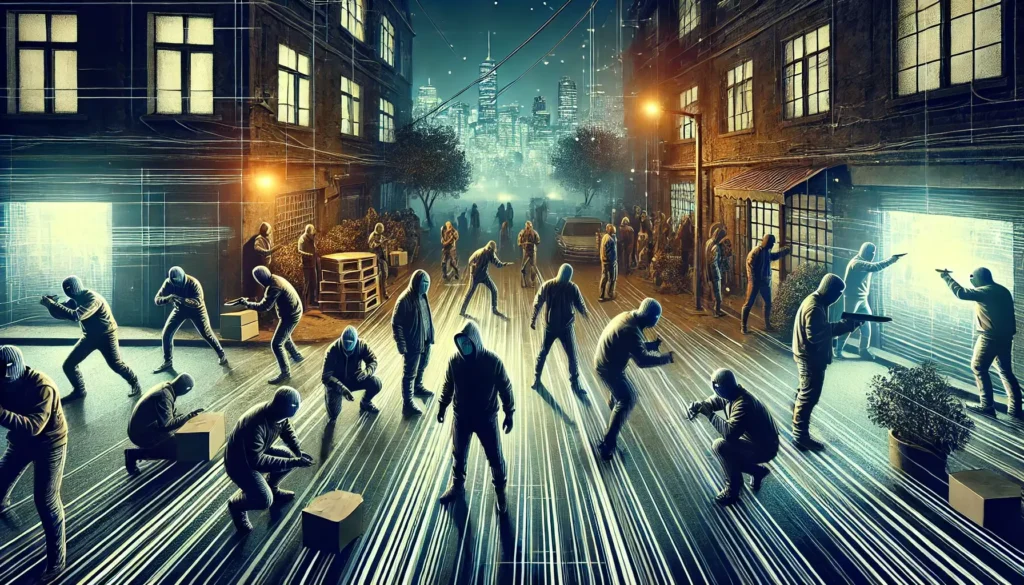
The Interplay Between Individual Crime and Collective Criminality
Crime and criminality are interconnected. Individual criminal actions contribute to broader criminal trends, while societal conditions shape individual choices. A person who commits theft may be influenced by personal desperation, but the prevalence of theft in a community often reflects deeper economic and social problems.
Policy interventions that focus solely on punishing individuals without addressing underlying socio-economic conditions fail to reduce overall criminality. Effective crime prevention requires a comprehensive approach that includes social reform, education, and economic opportunities.
The Role of Media in Shaping Perceptions of Crime
The media plays a crucial role in influencing how crime is perceived by the public. Sensationalist reporting can exaggerate the prevalence or severity of certain crimes, which may result in fear-based policies or distorted public opinions. Moreover, media narratives often focus on individual offenders rather than exploring structural causes of criminality, reinforcing the idea of crime as a purely personal failing.
Research has shown that media portrayals can lead to moral panics, where specific groups are stigmatized as inherently criminal. This, in turn, can impact legislation, policing practices, and even sentencing outcomes. Understanding this media-crime relationship is essential for a more balanced approach to crime prevention and criminal justice.
The Impact of Education and Family Structure
Educational attainment and family dynamics are significant factors influencing both individual criminal behavior and broader patterns of criminality. Individuals with limited access to quality education are more likely to face economic hardships, increasing the risk of engaging in crime. Furthermore, schools also serve as institutions of socialization, helping youth develop pro-social values and future aspirations.
Family structure also plays a role. Studies suggest that children raised in environments with neglect, abuse, or absent parental figures are at higher risk of exhibiting delinquent behavior. Supportive and structured family environments, on the other hand, can serve as protective factors against criminal involvement.
Technology and Modern Forms of Crime
The evolution of technology has introduced new arenas for criminal activity, such as cybercrime, identity theft, and online fraud. These crimes may not fit neatly into traditional theories of criminal behavior but still reflect a combination of individual choices and systemic vulnerabilities.
Cybercrime often requires technical knowledge and access to digital infrastructure, highlighting how opportunity and skill intersect in the commission of crimes. It also underscores the need for contemporary criminological theories to evolve and address the digital dimension of modern criminality.
Restorative Justice and Individual Responsibility
In contrast to retributive models of justice that focus on punishment, restorative justice emphasizes healing, accountability, and community involvement. It views crime not only as a violation of law but as harm done to relationships and communities.
Restorative practices offer a framework for understanding individual responsibility within a broader social context. They aim to reintegrate offenders into society by addressing the root causes of their behavior and fostering dialogue with victims. This approach recognizes that personal change is possible, especially when supported by community structures.
Cultural and Religious Influences on Criminal Behavior
Cultural norms and religious beliefs significantly influence perceptions of right and wrong, shaping individual behavior and societal definitions of crime. In some societies, behaviors considered criminal in one context may be tolerated—or even encouraged—in another, depending on prevailing cultural values.
Religious teachings often serve as moral frameworks that discourage criminal acts, promoting forgiveness, community, and ethical behavior. However, cultural conflicts or extreme interpretations of religious doctrines can also be sources of tension, potentially contributing to criminal acts, especially when used to justify violence or discrimination.
Peer Influence and Group Dynamics
For many individuals—especially youth—peer pressure and the desire for group acceptance can be powerful motivators for engaging in criminal activity. Gangs, delinquent peer groups, and deviant social circles often reinforce antisocial behaviors, creating environments where criminal conduct is normalized or even rewarded.
Group dynamics can diminish personal responsibility, as individuals may feel less accountable for actions committed collectively. This is particularly evident in crimes such as riots, vandalism, or group theft, where individuals act in ways they might not if alone.
Mental Health and Crime
Mental health disorders can be linked to criminal behavior, although the relationship is complex and often misunderstood. Individuals suffering from untreated mental illnesses, such as schizophrenia, bipolar disorder, or severe depression, may act in ways that violate the law due to impaired judgment, delusions, or emotional instability.
However, it’s important to note that the majority of people with mental illness are not violent. In fact, they are more likely to be victims of crime. Overrepresentation of mentally ill individuals in prisons often reflects systemic failures in providing adequate healthcare and support services.
Substance Abuse and Criminality
Drug and alcohol abuse is a major factor in many criminal cases. Substance dependence can lead individuals to commit crimes to support their addiction, such as theft or drug trafficking. Moreover, intoxication impairs judgment and self-control, increasing the likelihood of violent or reckless behavior.
The link between drugs and crime has led to debates on whether criminalization is the most effective approach. Many experts advocate for treatment-focused interventions that address addiction as a health issue rather than a purely criminal one.
The Role of Early Childhood Development
Early childhood experiences have a profound impact on later behavior, including the likelihood of engaging in crime. Neglect, abuse, exposure to violence, and unstable caregiving can disrupt emotional and social development, increasing the risk of future delinquency.
Programs that support parenting, early education, and child welfare have shown promise in reducing criminal behavior over time. These preventive strategies address root causes and offer long-term benefits to both individuals and society.
Conclusion: Toward a Holistic Understanding of Crime
Understanding crime requires more than distinguishing between individual acts and societal patterns—it demands an integrated perspective. Crime is both a reflection of personal decisions and a symptom of broader social realities. Only by addressing both dimensions—individual and collective—can policies be developed that are just, effective, and sustainable.
By incorporating psychological, sociological, economic, and technological factors, criminology can offer deeper insights into the nature of criminal behavior and pave the way for more equitable systems of justice.
Crime as an individual phenomenon and criminality as a collective phenomenon are two interconnected aspects of criminology. While individual crime can be analyzed through psychological and rational choice theories, criminality is shaped by broader societal, economic, and cultural factors. Understanding these dimensions is crucial for developing policies that not only punish crime but also address its root causes, fostering a safer and more just society.
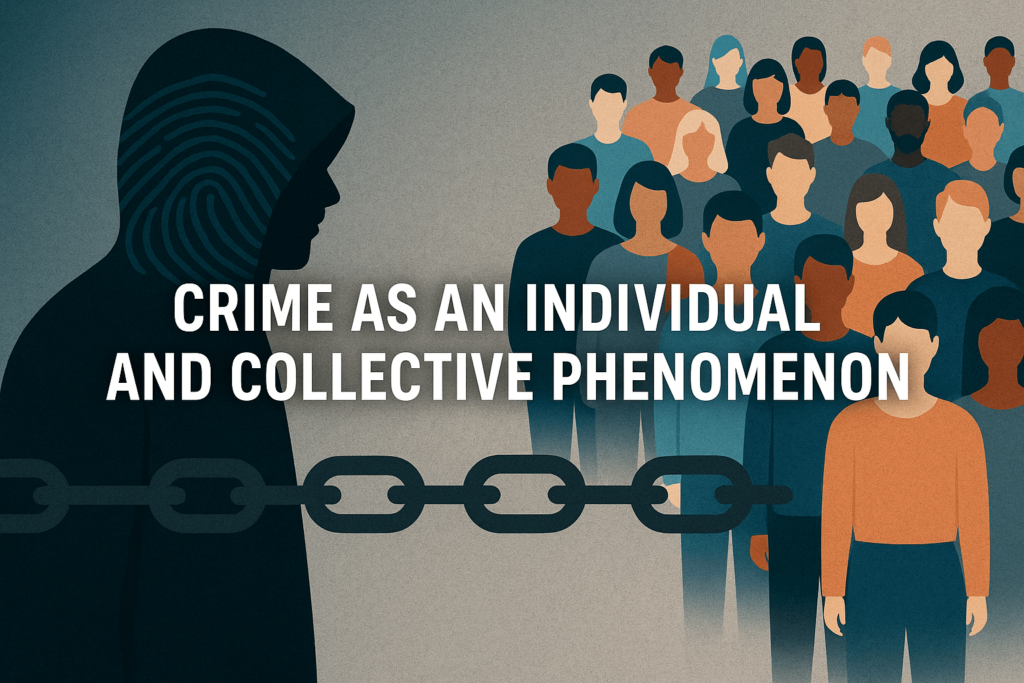
References
- Siegel, L. J. (2019). Criminology: The Core (7th ed.). Cengage Learning.
- Merton, R. K. (1938). Social Structure and Anomie. American Sociological Review, 3(5), 672–682.
- Shaw, C. R., & McKay, H. D. (1942). Juvenile Delinquency and Urban Areas. University of Chicago Press.
- Bandura, A. (1977). Social Learning Theory. Prentice Hall.
- Lombroso, C. (1876). The Criminal Man. (Original Italian title: L’Uomo Delinquente).
- Freud, S. (1923). The Ego and the Id.
- Cohen, A. K. (1955). Delinquent Boys: The Culture of the Gang. Free Press.
- National Institute of Justice. (n.d.). Theories of Crime. Retrieved from https://nij.ojp.gov
- World Health Organization. (2022). Mental Health and Substance Use. Retrieved from https://www.who.int
- United Nations Office on Drugs and Crime (UNODC). (2023). Global Study on Homicide. Retrieved from https://www.unodc.org
- BBC Future. (2021). Why People Commit Crime. Retrieved from https://www.bbc.com/future
- The Conversation. (2020). Crime and Inequality: How Social Factors Influence Criminal Behaviour. Retrieved from https://theconversation.com

